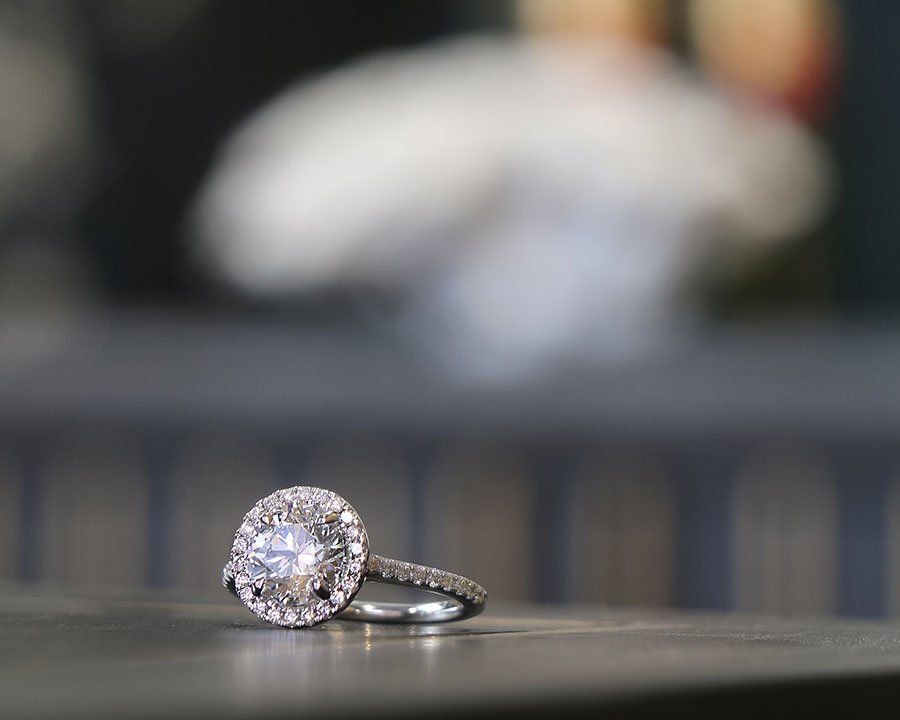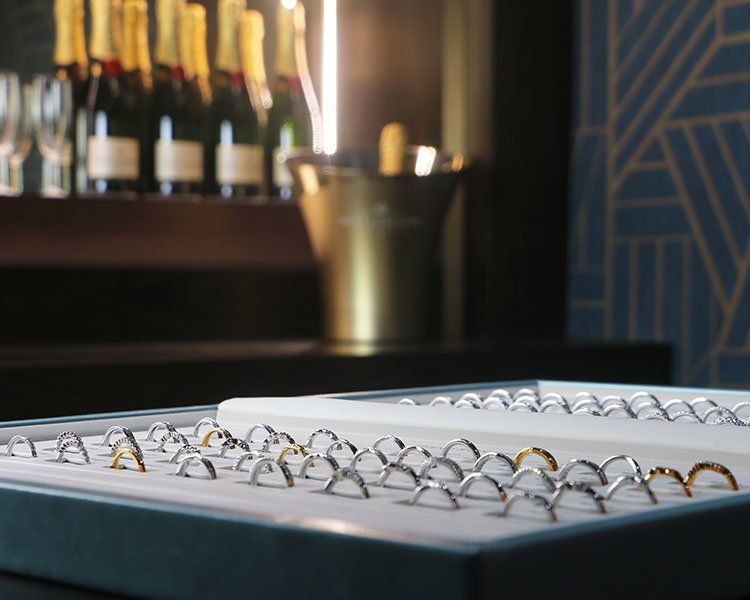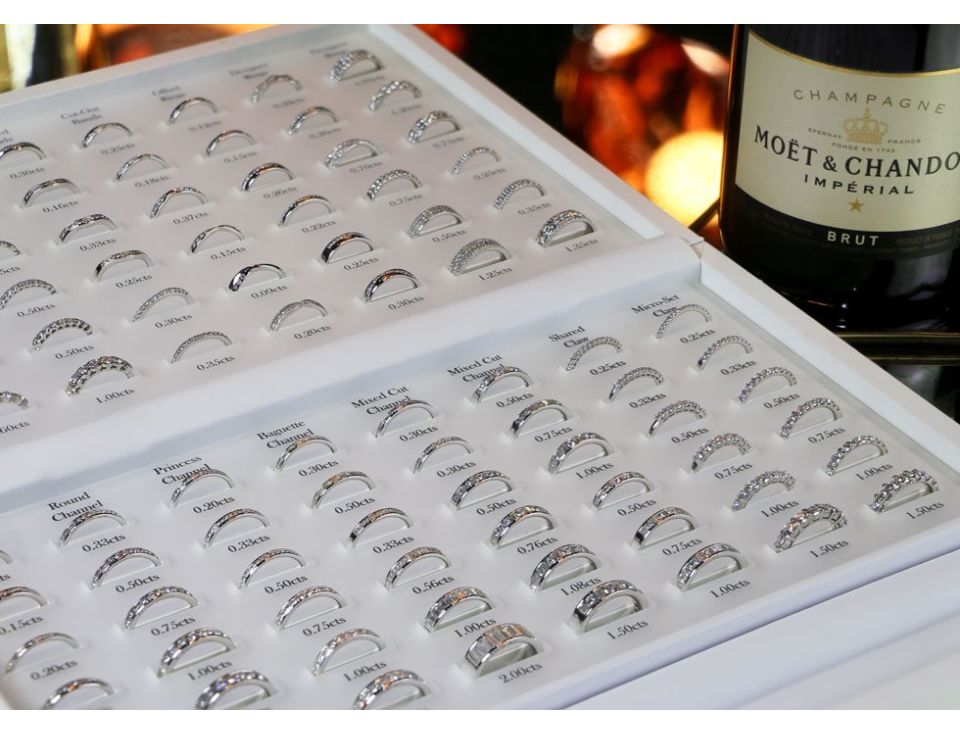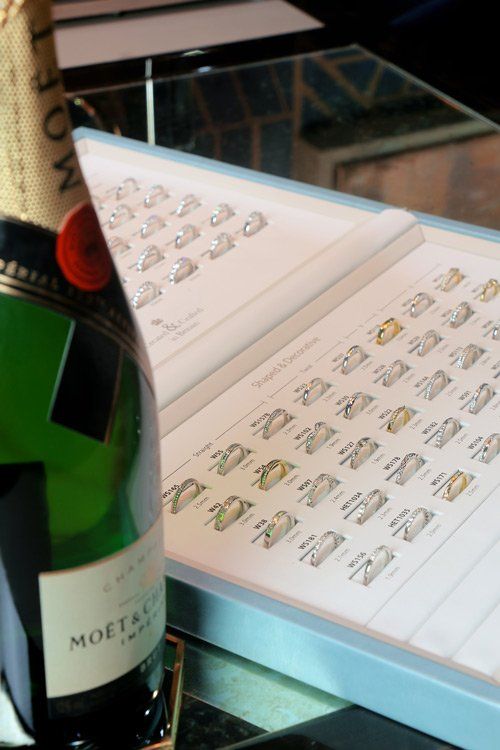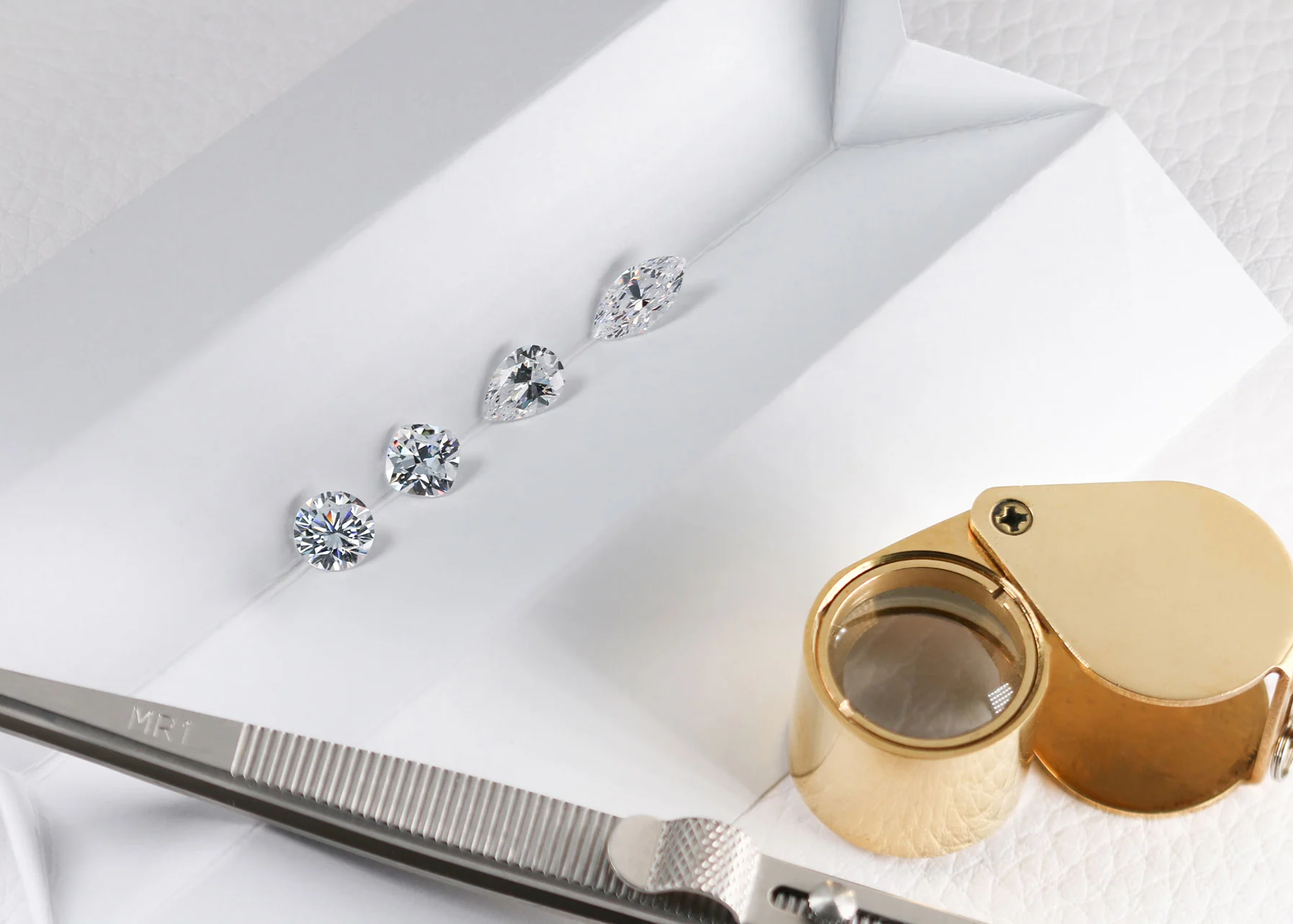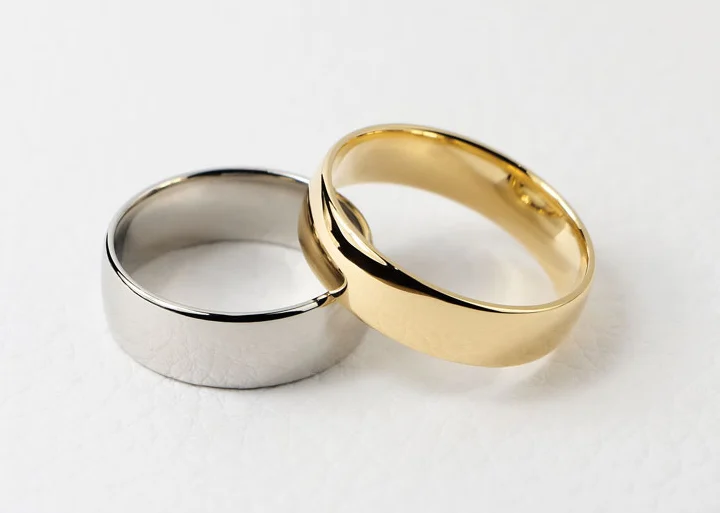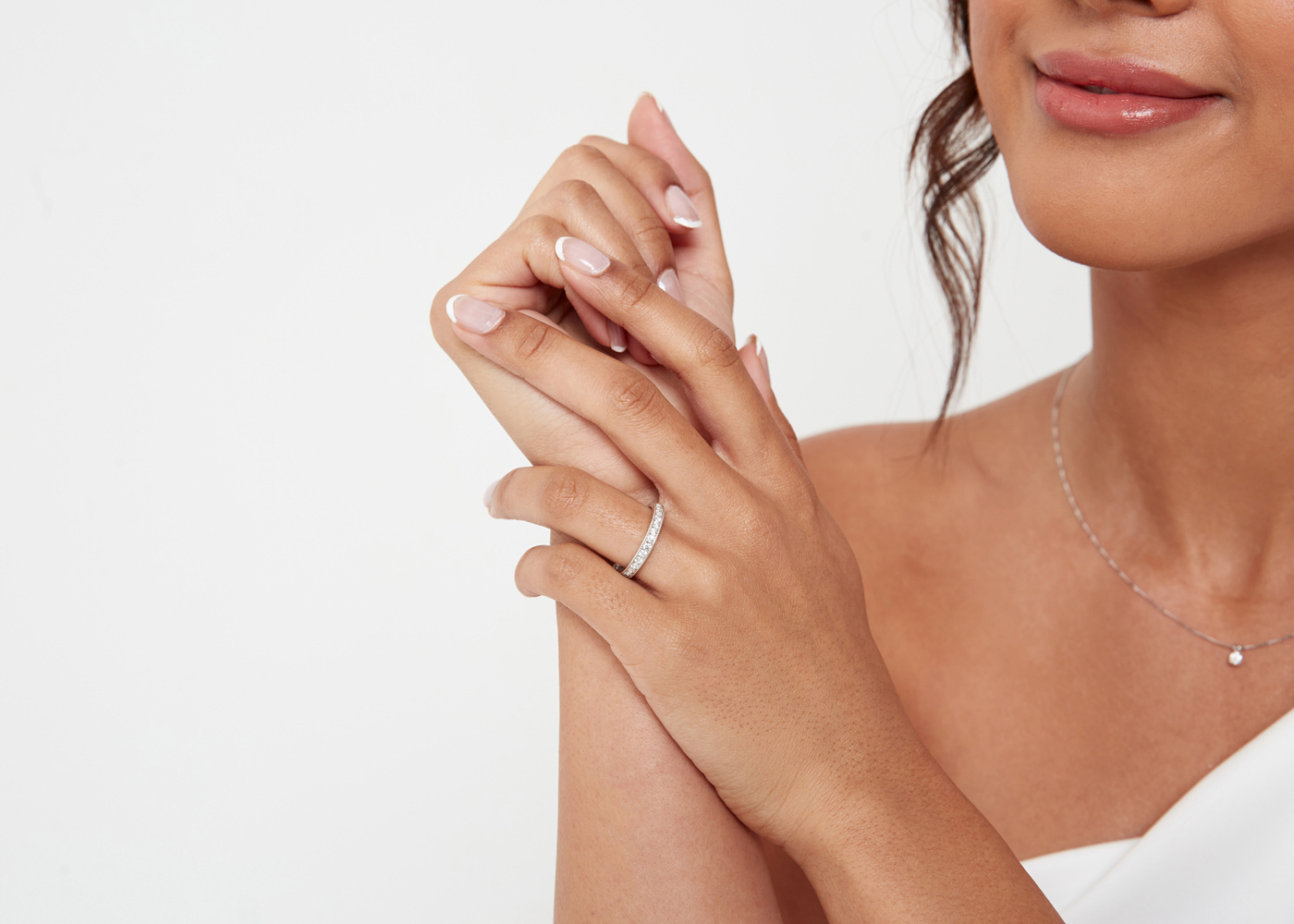GIA Diamond Certifications Guide
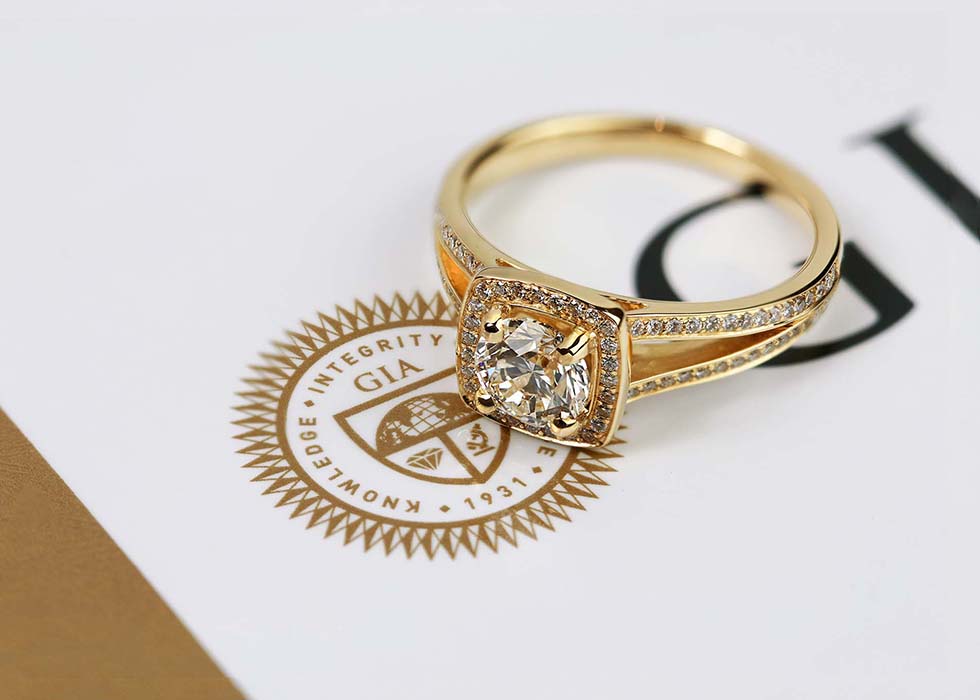
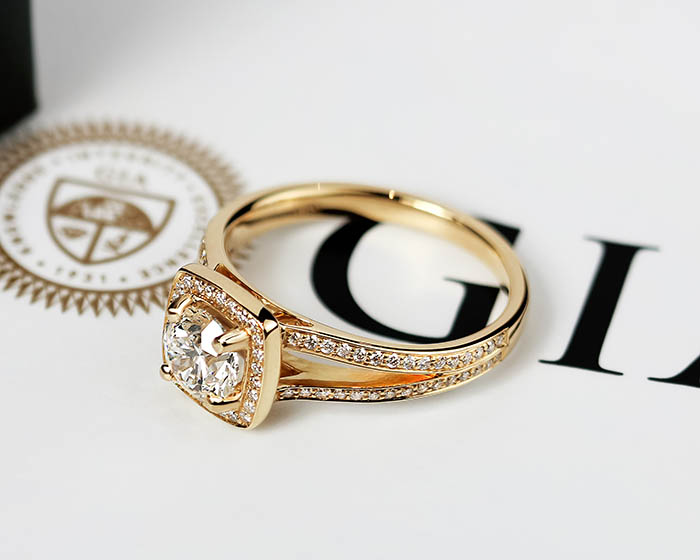
Tiana 0.90ct H/SI2 Brilliant Natural Diamond
The GIA (Gemological Institute of America) is the most trusted authority on gemstones - in particular, diamonds. Let’s take a closer look.
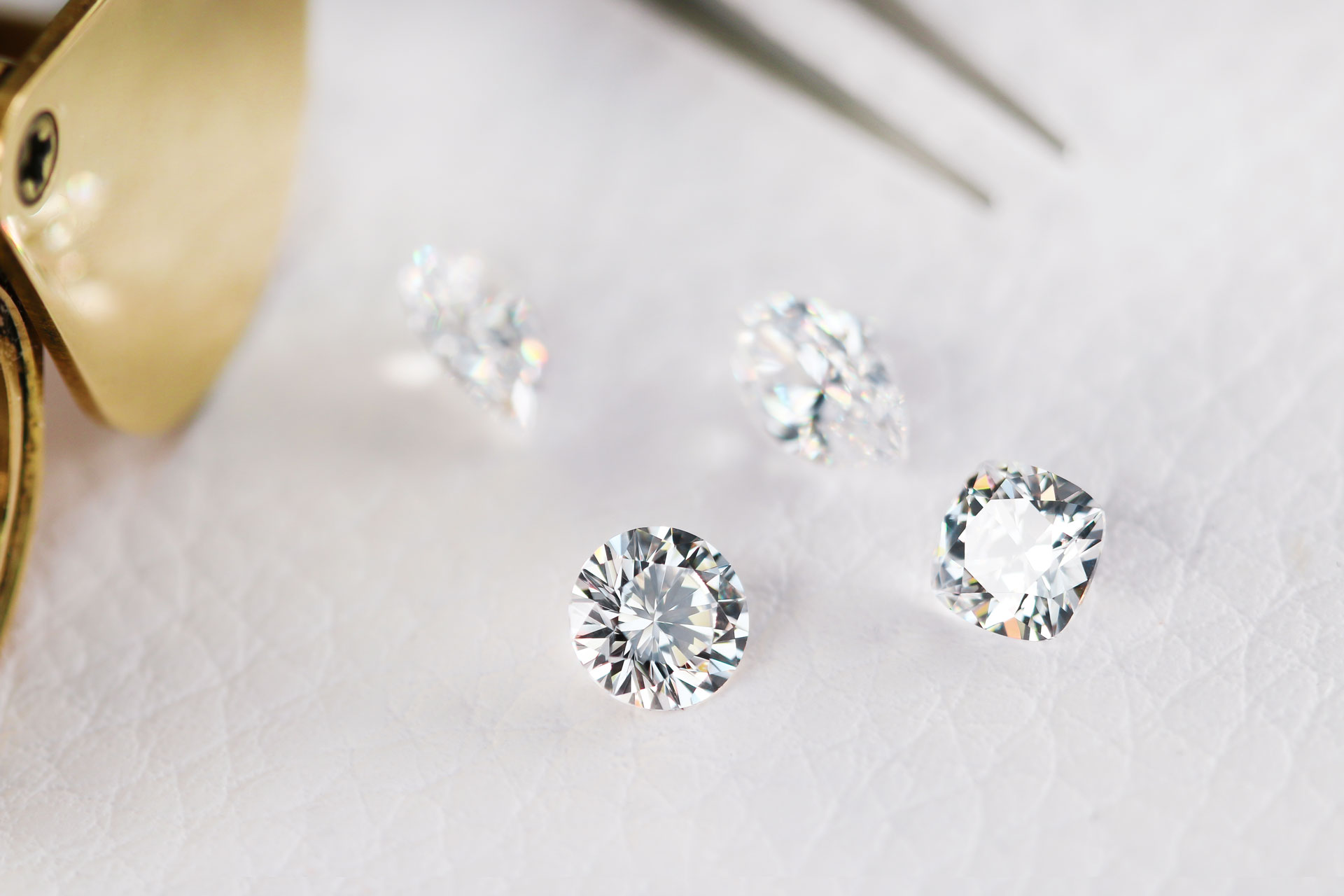
What Are GIA Diamonds?
GIA diamonds are those that have been certified by a qualified GIA specialist. Using specific gemological tools, they will examine, verify, and grade each diamond to ensure customers are getting the best diamond for their money.
GIA specialists can qualify all over the world, not just in the US, so it’s easy to find a reputable jeweller who works with GIA diamonds wherever you are.
At Joshua James, all of our natural diamonds over 0.30cts will come with a GIA certification, giving you peace of mind that your centre stone is the exact stone you’ve chosen. Likewise, all of our lab-grown diamonds over 0.30cts come with an IGI (International Gemological Institute) certification.
Why Buy GIA-Certified Diamonds?
To the untrained eye, diamonds can look very similar, so you need to be sure you’re getting the grade of diamond you’ve paid for. A GIA diamond certification tells you everything you and your jeweller need to know about the quality of your diamond, as well as any specific inclusions or marks that are unique to your stone.
They also verify the quality of your stone so that you can feel confident you’re getting the grade (including the colour, clarity, cut, and carat) that you have picked out for your engagement ring.
Not all diamonds without GIA certificates are poor quality, and other reputable diamond grading labs can also authenticate and grade a diamond. However, the GIA is one of the most reputable grading organisations in the world, and having a GIA certificate provides that reassurance that you’re investing in a genuine diamond and an heirloom piece of jewellery that will last a lifetime.
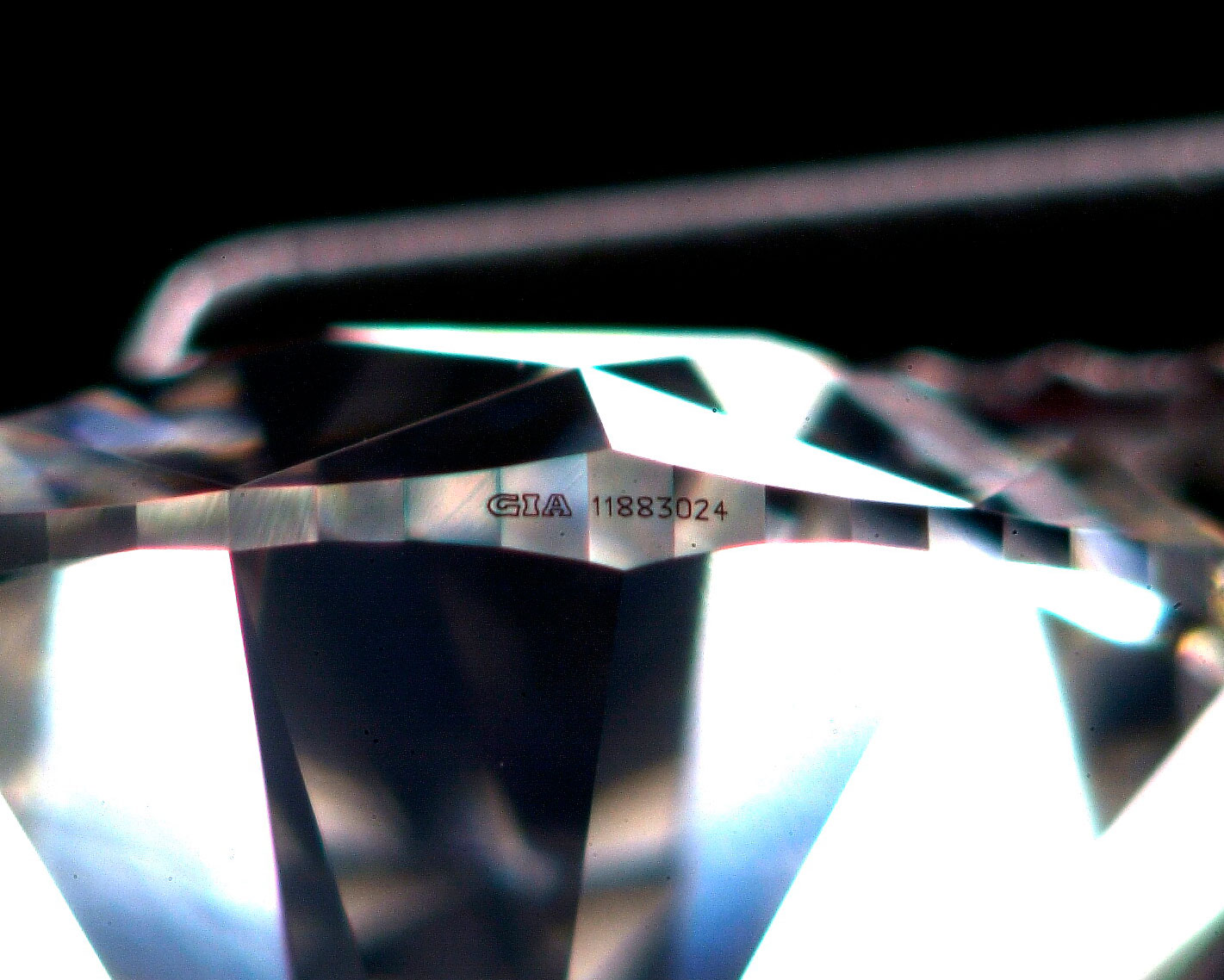
How Do I Know If My Diamond Is GIA Certified?
All GIA diamonds will come with a GIA report. This report has a unique report number that you can check on the GIA website to ensure it is genuine and valid. GIA diamonds are also laser inscribed on the girdle with the certificate number which can be seen under magnification.
If your diamond hasn’t arrived to you with a GIA certificate and is meant to have one, you should contact your jeweller to get this delivered.
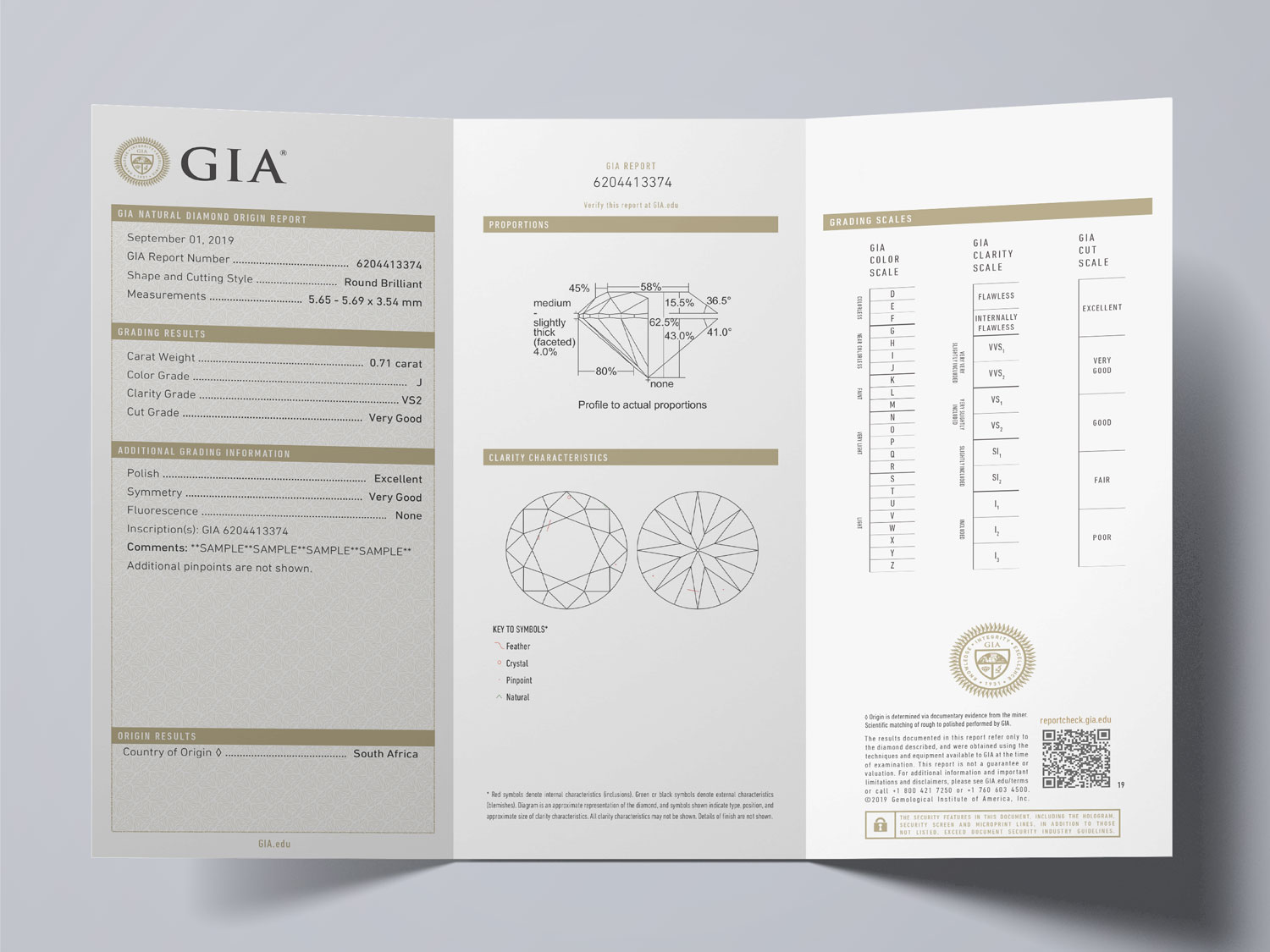
GIA Diamond Certifications Explained
A GIA certificate can be a lot to look at initially, but don’t worry - the Joshua James team is here to help.
This is a GIA certificate for one of Joshua James’ diamonds. We’ll use this example to explain exactly what a GIA certificate is telling you.
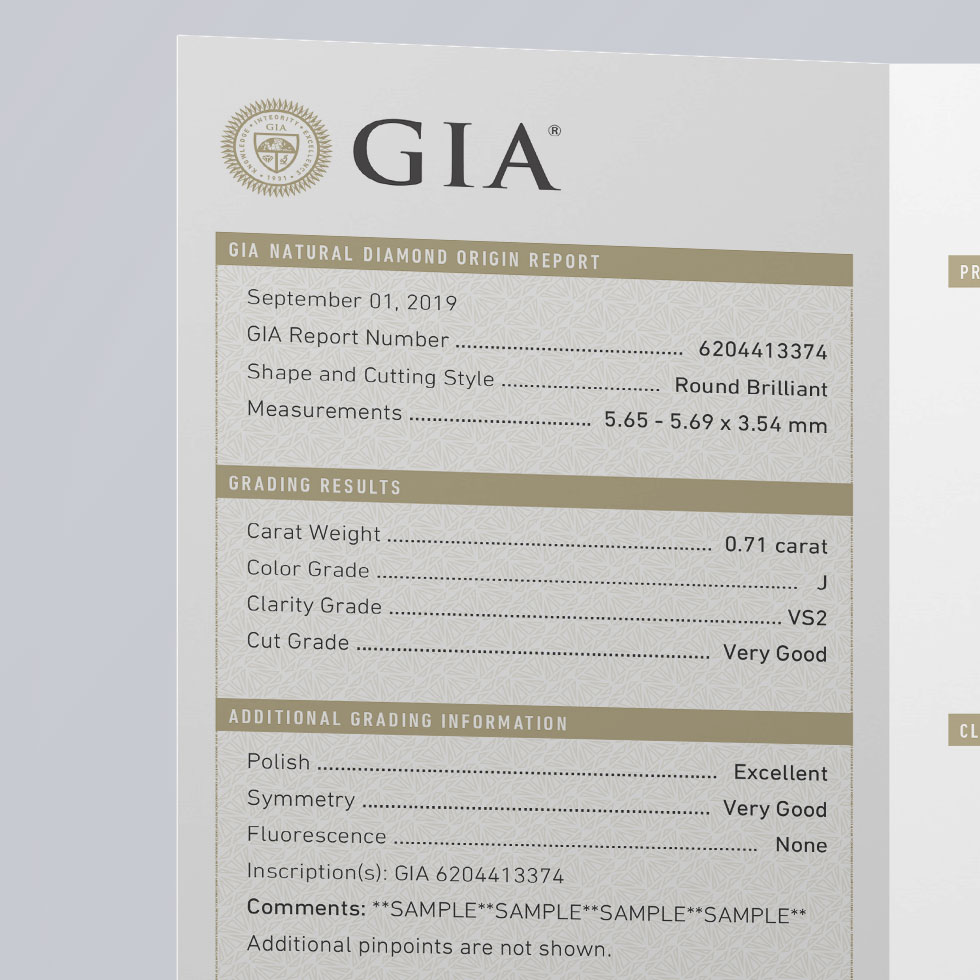
Diamond Grading Report
This section of the report provides you with a top-level overview of your stone, including the report date, the shape and cut style, and the measurements of your diamond.
Every GIA certificate also has a unique report number that can be used to identify a genuine GIA diamond.
You can check the validity of your GIA diamond certificate on the GIA website, as they keep a record of every certified diamond.
Grading Results
The GIA (and the vast majority of independent jewellers and other awarding bodies) will grade diamonds using the 4Cs:
Carat
Colour
Clarity
Cut
Additional Grading Information
The additional grading information provides you with a little more information on the quality of your diamond.
Polish
The polish of the diamond refers to how smooth each facet of the diamond is. This is measured by a GIA-certified gemologist. When a diamond is cut and polished, the polishing wheel can create tiny surface defects and scratches on the diamond’s surface. These aren’t visible to the naked eye but can affect the light performance of your diamond and the way it sparkles.
Symmetry
The symmetry of your diamond is exactly what it sounds like! The symmetry grading is affected by any misshapen, off-centre, or wavy facets, which can happen during the cutting and polishing process. Diamonds with poor symmetry can misdirect any light that enters the diamond and affect its brilliance.
Polish and symmetry are both graded on a five-point scale from Excellent to Poor.
Fluorescence
The fluorescence of a diamond refers to how much it glows under UV light. In the vast majority of cases, this doesn’t affect the appearance of the diamond in natural light, but it is often used by gemologists to determine the pricing of the diamond. At Joshua James, we don’t supply diamonds with fluorescence, which you’ll be able to see on your GIA certificate.
This section of the report also contains any engraving and any additional comments from the gemologist.
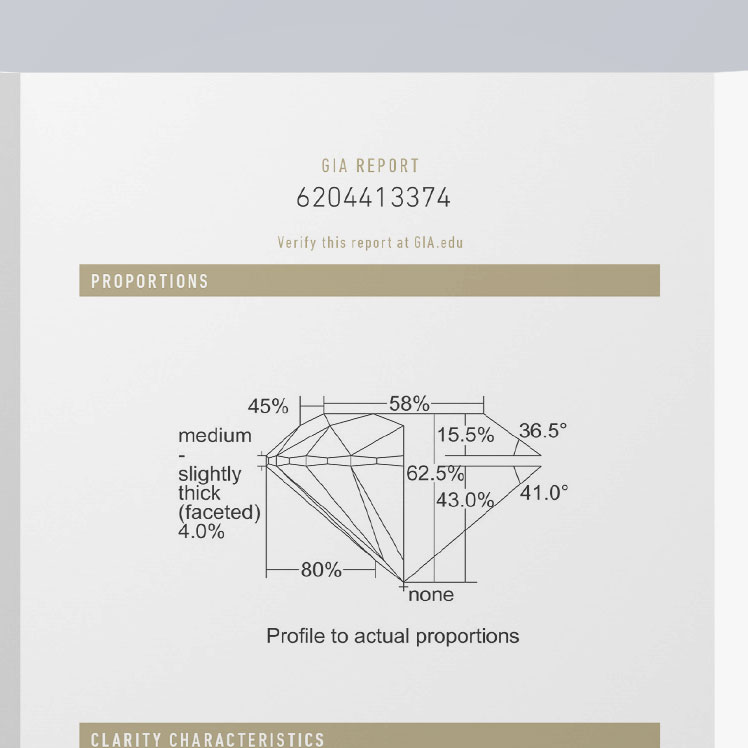
Proportions
The proportions of a diamond massively affect the way light enters and exits a diamond, which, in turn, affects the sparkle of your diamond. For example, two round diamond engagement rings with the exact same band, setting, grading information, and cut style can have entirely different levels of brilliance based on the proportions of the diamond.
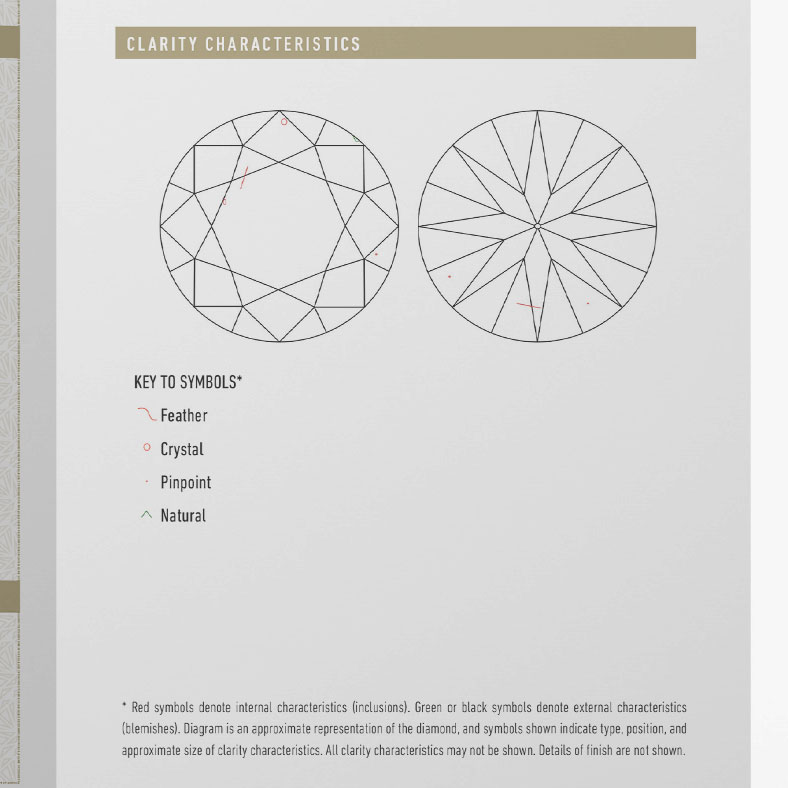
Clarity Characteristics
The GIA clarity grade measures the overall appearance of the diamond. This section, however, covers the individual clarity characteristics and inclusions of your specific diamond. It will show where inclusions can be seen on the diamond face, and what type of inclusions they are.
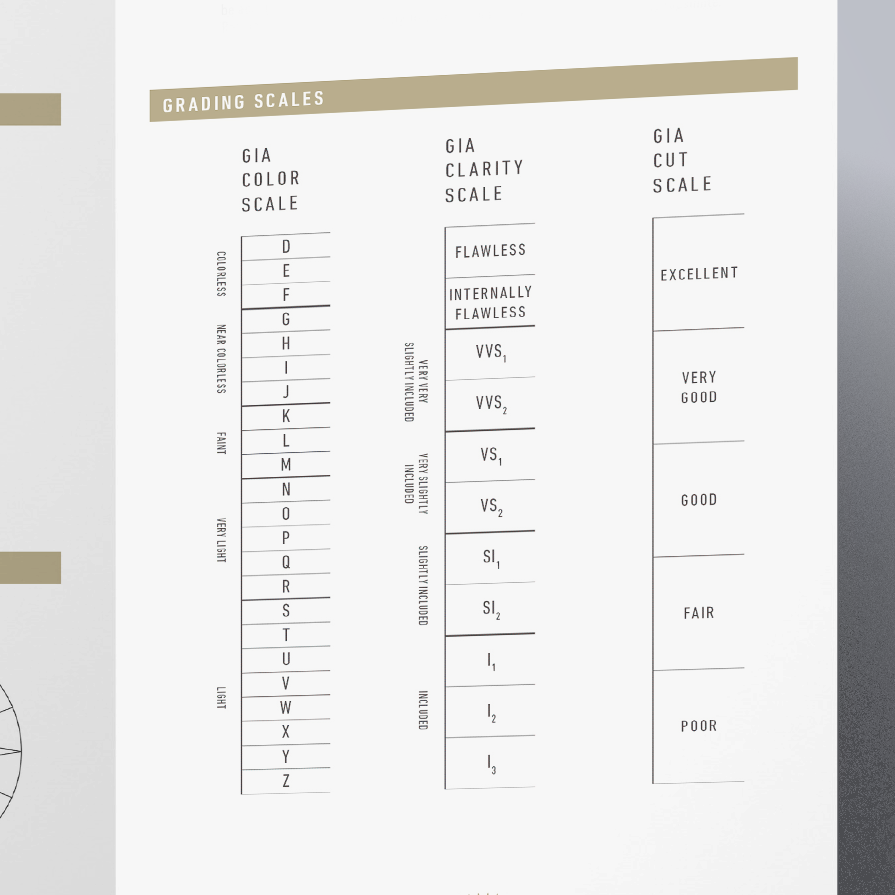
Grading Scales
The GIA grading scales are included in all GIA reports.
- The diamond colour scale runs from D (colourless) to Z
- The clarity scale runs from flawless to I3 (included)
- The diamond cut scale runs from excellent to poor
Are Lab Diamonds GIA Certified?
However, the most common certification board for lab-grown diamonds is the IGI (International Gemological Institute).
Note: It’s much easier to find IGI-certified lab-grown diamonds than GIA lab-grown diamonds.
How Can I Get a Diamond GIA Certified?
You should be aware though that GIA certification is only available on unmounted diamonds. This allows for an accurate examination of the stone, unencumbered by a ring setting.
How Much Does It Cost to Get a Diamond GIA Certified?
At Joshua James, all of our natural diamond engagement rings come with GIA certification as standard, so there are no additional fees associated with our rings.
Are GIA-Certified Diamonds Conflict-Free?














